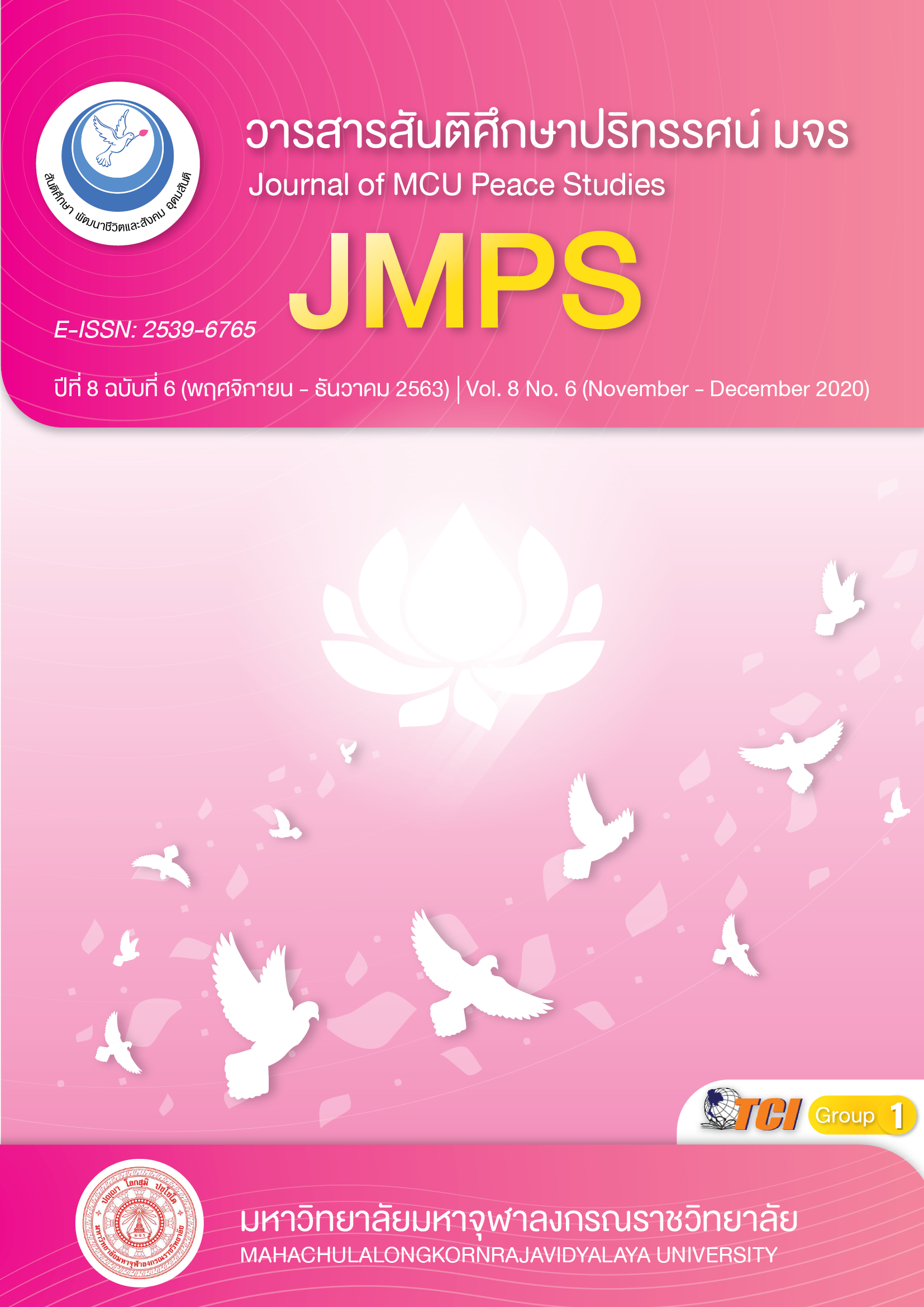แนวทางการพัฒนาการจัดการของผู้ประกอบการธุรกิจ ไม้ยางพาราแปรรูปในภาคใต้ตอนบน
Main Article Content
บทคัดย่อ
บทความวิจัยเรื่องนี้มีวัตถุประสงค์เพื่อศึกษา 1) เพื่อศึกษาสภาพการดำเนินงานธุรกิจ คุณลักษณะของผู้ประกอบการธุรกิจ การจัดการและวิธีการพัฒนาการจัดการของผู้ประกอบการธุรกิจไม้ยางพาราแปรรูป 2) เพื่อเปรียบเทียบการจัดการของผู้ประกอบการธุรกิจไม้ยางพาราแปรรูปจำแนกตามสภาพการดำเนินงานธุรกิจ 3) เพื่อวิเคราะห์ความสัมพันธ์ระหว่างคุณลักษณะกับการจัดการของผู้ประกอบการธุรกิจ 4) เพื่อวิเคราะห์ปัจจัยด้านการจัดการของผู้ประกอบที่มีอิทธิพลต่อวิธีการพัฒนาการจัดการของผู้ประกอบการธุรกิจ 5) เพื่อนำเสนอแนวทางการพัฒนาการจัดการของผู้ประกอบการธุรกิจไม้ยางพาราแปรรูป กลุ่มตัวอย่างเป็นผู้ประกอบการธุรกิจไม้ยางพาราแปรรูปในภาคใต้ตอนบน ทั้งหมด 315 แห่ง ผลการวิจัยพบว่า ส่วนใหญ่มีสถานประกอบการเป็นขนาดย่อม ขนาดการจ้างงานไม่เกิน 50 คน คุณลักษณะของผู้ประกอบการธุรกิจไม้ยางพาราแปรรูป มีความคิดเห็นอยู่ในระดับมาก ( = 3.91, SD. = 0.34) การจัดการของผู้ประกอบการธุรกิจไม้ยางพาราแปรรูป พบว่า ผู้ประกอบการธุรกิจไม้ยางพาราแปรรูปในภาคใต้ตอนบน มีความคิดเห็นอยู่ในระดับมาก ( = 4.02, SD. = 0.32) และวิธีการพัฒนาการจัดการของผู้ประกอบการธุรกิจไม้ยางพาราแปรรูป พบว่า ผู้ประกอบการธุรกิจไม้ยางพาราแปรรูปในภาคใต้ตอนบน มีความคิดเห็นอยู่ในระดับมาก ( = 3.84, SD. = 0.38) ผู้ประกอบการมีระดับความคิดเห็นเกี่ยวกับการจัดการของผู้ประกอบการธุรกิจไม้ยางพาราแปรรูปแตกต่างกันทุกด้าน อย่างมีนัยสำคัญทางสถิติที่ระดับ 0.05 มีค่าความสัมพันธ์โดยรวมในทิศทางเดียวกันระดับปานกลาง (r=.616) และรายด้านมีค่าความสัมพันธ์ r= .357 และปัจจัยด้านการจัดการของผู้ประกอบมีอิทธิพลต่อวิธีการพัฒนาการจัดการของผู้ประกอบการธุรกิจไม้ยางพาราแปรรูปในภาคใต้ตอนบน อย่างมีนัยสำคัญทางสถิติที่ .05 และแนวทางในการพัฒนาผู้ประกอบการ ควรมุ่งเน้นคิดค้นและพัฒนาผลิตภัณฑ์ เพื่อสร้างความแตกต่างจากคู่แข่งขันทั้งภายใน และต่างประเทศ สามารถนำเสนอผลิตภัณฑ์ที่ตรงกันความต้องการของลูกค้าให้มากยิ่งขึ้นซึ่งจะเป็นการรักษาลูกค้าเก่าและเพิ่มโอกาสทางการแข่งขันในอนาคตยิ่งขึ้น
Article Details
ทัศนะและความคิดเห็นที่ปรากฏในบทความในวารสาร ถือเป็นความรับผิดชอบของผู้เขียนบทความนั้น และไม่ถือเป็นทัศนะและความรับผิดชอบของกองบรรณาธิการ ยินยอมว่าบทความเป็นลิขสิทธิ์ของวารสาร
เอกสารอ้างอิง
Bank of Thailand. (2017). Summary of overall business conditions in the first quarter of 2017 and trends Quarter 2 Year 2017. Retrieved March 5, 2017, from https://www.bot.or.th/Thai/MonetaryPolicy/Southern/BLP_Report50/BLP_Q260.pdf
Boylan, P.J. (2012). The theory of management: Introduction to the heretical and philosophical basis of Modern management. Retrieved March 5, 2017, from http://www.city.ac.uk/artspol/theorymgt.html.
Burns, T., & Stalker, G.M. (1961). The Management of Innovation. London: Tavistock.
Cantillon, R. (1931). Essai Sui La Nature Du Commerce En General. London: Macmillan & Co.
Cronbach, & Lee J. (1990). Essentials of psychological testing. New York: Harper Collins.
Cunningham, J. B., & Lischeron, J. (1991). Defining entrepreneurship. Journal of Small Business Management, 29(1), 45-61.
Drucker, & Peter F. (2002). The Discipline of Innovation. Massachusetts: Harvard Business Review.
Department of Business Development. (2015). Document of legal measures to promote cross-border trade and transportation. Retrieved December 21, 2017, from https://www.dbd.go.th/more_news.php?cid=819
Frese, M. (2000). Success and Failure of Mechlien Owners in Africa. California: Greenwood Publishing.
Gubman, L.E. (1998). The talent solution: Aligning strategy and people to achieve extraordinary results. New York: McGraw-Hill.
Kanlaya, V. (2014). Using SPSS for windows for data analysis. (4th ed.). Bangkok: Samlada.
Kritsada, T. (2016). The Feasibility Study of Employee Commitment to the Organization: A Case Study of Thai Niche Engineering Company Limited. Southeast Asia Interdisciplinary Academic Conference Year 2016. Bangkok: n.p.
Ministry of Industry. (2018). Industrial economic report in January 2018 and 1st quarter trend 2018. Retrieved September 13, 2017, from http://www.oie.go.th/academic.
Nuchpawee, L. (2011). Business and entrepreneurship. (2th ed.). Bangkok: Academic Promotion Center.
Pakorn, P. (1995). Theories and concepts of development in development management. Bangkok: Samjarenpanet.
Porter, M. E. (1990). The Competitive Advantage of Nations. London: Macmillan.
Rissal, R. (1992). A Study of the characteristics of entrepreneurs in Indonesia. Dissertation Abstract International, 49(6), 15-16.
Schumpeter, J.A. (1934). The Theory of Economic Development. Cambridge, Massachusetts: Harvard University Press.
Supa, J. (2014). The relationship between executive characteristics and management of the Thai leather export industry. Journal of Business, 3(1).
Surasak, N. (2012). Creating a business network for the survival of small businesses. Retrieved April 26, 2017, from http://www.defence.thaigov.net/inform/network.html.
Thanayut, B. (2018). Economic analysis 2017. Retrieved September 13, 2017, from https://www.bot.or.th/Thai/MonetaryPolicy/EconomicConditions/AnnualReport/AnnualReport/AnnualReport2560.pdf
Tichy, N. M., & Devanna, M. A. (1986). The Transformational Leader. New York: Riley.


